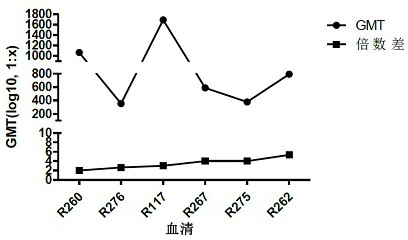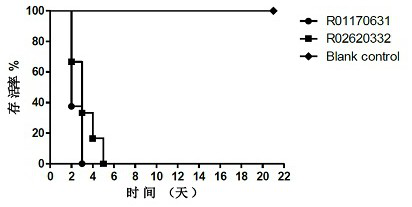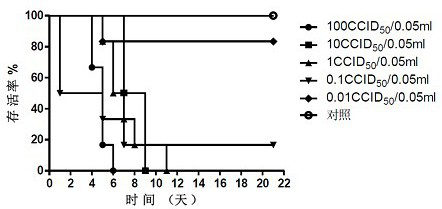Coxsackievirus A6-type strain and application thereof
A Coxsackie virus and strain technology, applied in the direction of viruses, virus peptides, antiviral agents, etc., can solve the problems of no Coxsackie virus, no vaccine attack strains, and poor susceptibility of the strains, and achieve Strong virulence, improved accuracy and repeatability, and good immunogenicity
- Summary
- Abstract
- Description
- Claims
- Application Information
AI Technical Summary
Problems solved by technology
Method used
Image
Examples
Embodiment 1
[0087] Example 1 Preliminary Screening of Coxsackievirus Type A6 Strains
[0088] (1) Processing of clinical samples
[0089] Add 0.25 ml of each sample to a centrifuge tube in a biosafety cabinet. Add 2.5 μl of penicillin and streptomycin solution, mix well, and place overnight at 4°C. Centrifuge at 2000 rpm for 20 min, and store the supernatant at 2-8°C for inoculation.
[0090] (2) Virus isolation and culture
[0091] Take healthy and non-contaminated RD cells that grow to 80-90% density, and discard the cell culture medium. Inoculate 0.2ml / well of the processed sample into a 6-well plate, inoculate 1 well for each sample, and add 0.2ml / well virus culture solution at the same time, place at 35°C, 5% CO 2Adsorption in the incubator for 1h. After that, add 3.5ml of virus culture solution to each well, and place at 35°C, 5% CO 2 cultured in an incubator. Set 2 wells of well-grown cells that were not inoculated with specimens as cell controls.
[0092] (3) Virus harvest...
Embodiment 2
[0159] Example 2 plaque purification
[0160] Inoculate the virus dilutions of the six strains with good immunogenicity in the cross-neutralization ability study in Example 1 into a 6-well cell culture plate for purification. The specific method is as follows:
[0161] (1) Cell preparation: RD cells that had grown into a monolayer were washed and digested and inoculated in a 6-well cell culture plate, 7×10 5 cells / well in 5% CO 2 Incubate at 37±1°C in an incubator until a dense monolayer grows. Discard the original culture medium, wash the cell surface, and wash away the residual bovine serum and dead cells.
[0162] (2) Virus preparation: Dilute the virus solution to an appropriate multiple.
[0163] (3) Virus adsorption: inoculate the diluted virus solution, 0.4ml / well, set virus solution control and cell control at the same time, place in 5% CO 2 Adsorb in an incubator at 35°C for 1 to 2 hours, during which time the cell plate was gently shaken several times every 15 to...
Embodiment 3
[0168] Embodiment 3 detects the determination of candidate virus strains
[0169] Amplify the virus strain purified by three plaques to the 5th generation to establish the original seed, and conduct relevant identification research and passage stability research (the detection method is the same as in Example 1), and select the cross-protection range according to the passage stability research results The strains with broad spectrum, good genetic stability and high titer were used as candidate strains for detection.
[0170] The identification research of original seed strains mainly includes immunogenicity, virus titration, genome sequencing analysis, and cross-neutralization ability research.
[0171] The research on the stability of subculture is mainly to subculture the original seed virus solution on RD cells in a certain proportion until the 15th generation, and carry out virus titration and genome sequence analysis on each generation of strains during the subculture pro...
PUM
 Login to View More
Login to View More Abstract
Description
Claims
Application Information
 Login to View More
Login to View More - R&D
- Intellectual Property
- Life Sciences
- Materials
- Tech Scout
- Unparalleled Data Quality
- Higher Quality Content
- 60% Fewer Hallucinations
Browse by: Latest US Patents, China's latest patents, Technical Efficacy Thesaurus, Application Domain, Technology Topic, Popular Technical Reports.
© 2025 PatSnap. All rights reserved.Legal|Privacy policy|Modern Slavery Act Transparency Statement|Sitemap|About US| Contact US: help@patsnap.com



